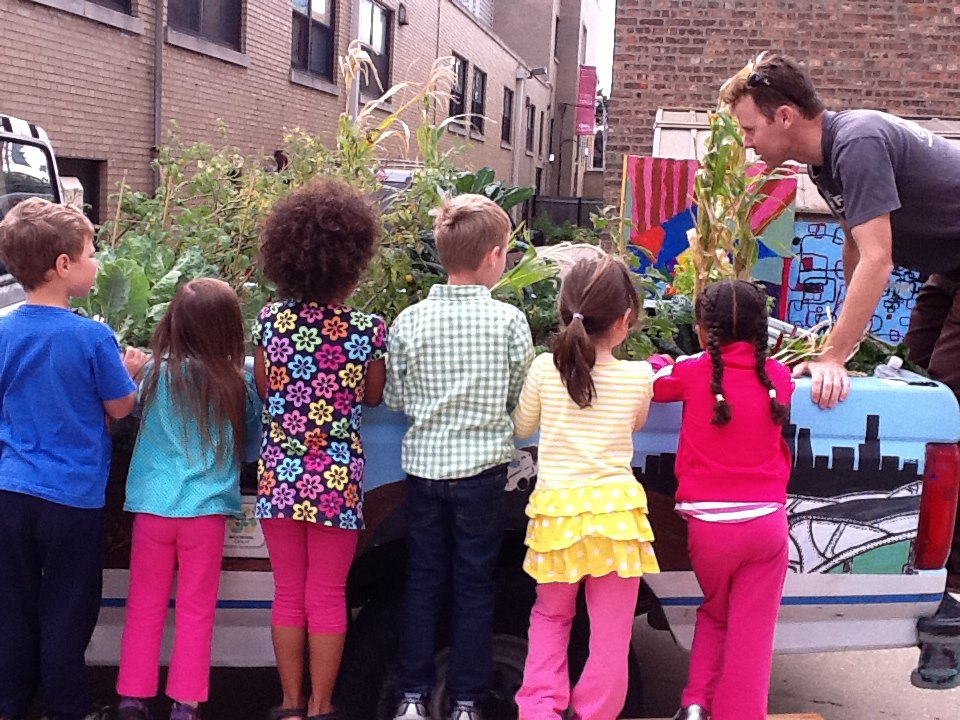Post written by CHC member Jenny Carson
Jenny is serving as a Colorectal Cancer Screening Health Educator with the American Cancer Soceity's Statewide Colorectal Cancer Screening InitiativeServing as a Chicago Health Corps member, I feel a commitment to better understand the vast communities and cultures that make up the social fabric of the Chicago Metropolitan area. Since moving to Chicago, I read about the history of Chicago’s neighborhoods, in order to better understand why “the neighborhood effect” and disparities continue to exist. The conditions of each neighborhood have major effects on that community, impacting mortality and chronic disease rates, health behaviors, and violence.
 One of the most apparent, yet often
overlooked, public health challenges can be observed during my daily commute. I
witness how neighborhoods shape behaviors and influence the health of the
diverse population getting on and off public transit. I wrote a sequence of words that describe what I see
out my window on my daily commute as I move
from a Chicago northwest neighborhood off the CTA Blue Line to
the free clinic I serve at off the green line in a Chicago southwest
neighborhood.
One of the most apparent, yet often
overlooked, public health challenges can be observed during my daily commute. I
witness how neighborhoods shape behaviors and influence the health of the
diverse population getting on and off public transit. I wrote a sequence of words that describe what I see
out my window on my daily commute as I move
from a Chicago northwest neighborhood off the CTA Blue Line to
the free clinic I serve at off the green line in a Chicago southwest
neighborhood. Coffee steam, Hipsters, glasses, Newspapers, Greek Yogurt, Pea coats, scarves, brief cases, Students, human sardines, tunnels, escalators, stairs,pigeons,my watch, head phones, Bulls hat, Hip-Hop, Dunkin Donuts, trackssss, feel the sway, skyline, U.S. Cellular Field, my skin color, FlaminHots, grocery store?, corner stores, strollers, Cop Cars, parking lots, security guards, sliding doors. . . Medical Home
The health of a community starts with an assessment of how the physical, social, and service environment of the neighborhood affects health behaviors. The physical environment of a neighborhood, which includes the “built environment” (i.e. infrastructure) and natural environment (i.e. trees, flowers), combined with the social environment (i.e. relationships among residents), affects the neighborhood residents’ health risks and behaviors. For example, pollution and high crime rates in a neighborhood often leads to low exercise rates, increased drug and alcohol use, and lack of healthy role models. A neighborhood’s service environment, including availability of employment, good schools, and transportation resources, can affect whether residents smoke, have healthy diets, and practice safe sex.
HEALTH is all around us, including much more than feeling ill and trying to exercise. The next time you commute, or simply sit in a public space, look up and take in your environment. In order to preserve the health of future populations, we must change our daily behaviors and evaluate the health of every community with a holistic assessment. What will you notice?
For more information on the neighborhood effect in Chicago, check out this book from the University of Chicago press “The Great American City: Chicago and the enduring neighborhood effect.”
Projects such
as the Smart Chicago
Collaborative: Chicago Health Atlas will help us evaluate communities to improve care.
Also check out
a study of 77 of Chicago’s Neighborhoods conducted by Northwestern University
Feinberg School of Medicine, in collaboration with Chicago Department of Public
Health and Aetna, Inc., documenting the health of residents and resources in
Chicago neighborhoods.







